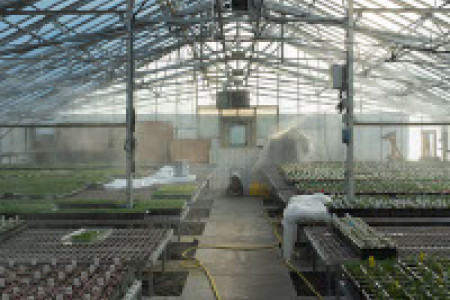Know your scoby
Maintaining a healthy symbiotic relationship with kombucha culture
Kombucha has existed for hundreds of years, yet it is only just gaining popularity in Winnipeg. The strong, sweet tea is fermented by a bacterial culture called a Symbiotic Culture of Bacteria and Yeast, affectionately known by its cute acronym, SCOBY.
The SCOBY is a living entity and behaves as such.
“You can’t depend on it to always do what you want it to do,” Dan Pastuck, founder and brewmaster of Prism Kombucha, says.
Max Frank, head chef and manager at Have a Nice Day, sourced his initial SCOBY from a friend.
“I’ve had a bunch of different SCOBYs. I’ve purchased five from friends and just combined them … I’ve given pieces away, too,” Frank says. “Five dollars a SCOBY is kind of the going rate.”
Pastuck began brewing at home and for Deer + Almond in 2012, before starting Prism this past summer. Originally, he brewed with a culture from a friend, but when he began selling wholesale, he had to purchase a commercially-sourced SCOBY in accordance with Manitoba Agriculture laws.
Pastuck explains that he was not too concerned that using a commercial SCOBY would leave his product with less personality. Prism is brewed at FortWhyte Alive, and the SCOBY’s microbial profile is influenced by its environment.
“Every time you touch a SCOBY, every time you interact with it, in the air … it changes it,” he explains. “That’s why I like it. (It) makes it more like an expression of its environment.”
Frank ferments every batch with the same SCOBY.
“I think that lends a lot of the characteristics,” Frank says. He says that his SCOBY was affected when he brewed a batch with fermented watermelon, since it had more sugar to consume. It recovered in a pomegranate-celery blend, but the fermentation time was elongated.
Pastuck adds 15 per cent of brewed kombucha to jump-start a new batch and then lets the product work its magic for two to three weeks. He explains that many factors influence the variability in brewing time - a batch that should take 14 days may be done in nine.
“One batch might not taste exactly like the other batch. I do my best to maintain the same parameters … but you never know,” Pastuck says. He finds this makes the product more interesting.
However, this variability means that the kombucha might not always be available when anticipated and might not be what the consumer expects. Pastuck says that this is a common issue for brewers.
“I think that if people have experimented with making kombucha, then they understand it,” he explains. “You have to stand by your product and know what your conditions are and what you want it to be like in the end, and then just stay firm to that.”
Frank enjoys experimenting with his brewing process.
“I like to play around with it … see what works, see what doesn’t work,” he says. “Like anything fermented, there’s a ton of variation.”
He says that he would love to share his SCOBY or a recipe with anyone looking to start brewing.
Find Prism Kombucha products at Thom Bargen, Deer + Almond, The Roost and Fools & Horses.
Published in Volume 72, Number 8 of The Uniter (November 2, 2017)






